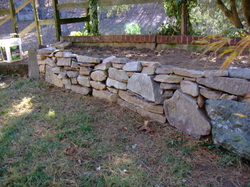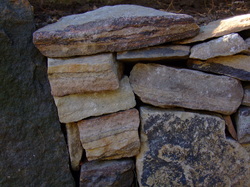
coal forest subsided, or both.
The processes making these rocks were highly repetitious and are not too hard to understand. The muddy shale-bottomed swamps where the coal forests grew were a little above sea level. The ground was eroded clay and silt from inland, and iron was among the minerals dropping out in these layers. The coal seams and the shale beds can be anywhere from a few feet or a few tens of feet thick to mountainside-thick, depending on how long they were above the local sea level. When these beds sank or the sea rose, the result was a beach. The sandstone representing the beach phases of these cyclothems can also be anywhere from a few feet thick to hundreds of feet thick. The parts of these landscapes that were not muddy coal-tree deltas or sand beaches tend to be locally missing. Over time, lots of time, as the sea level fell again, or as the land rose, or both, the cycle would reverse itself with incursions of mud and plant debris until the delta overwhelmed the beach with brackish or fresh water and the coal forest reasserted itself, starting the next cycle of the cyclothem.
One can’t help enjoying the carbon seams in this sandstone. Floods or storm events would wash layers of iron-rich clay and masses of plant matter downstream onto the sand, to be buried, ultimately as a black streak in a white rock. Some of these bands are probably the debris of single events, one particular hurricane. Those forests, rivers and beaches, with their enormous dragonflies and bizarre amphibian wildlife, seem very very distant somehow and not easy to imagine, and yet it is just a fact that we can easily handle those beaches if we want to — stack them into walls. Somehow they speak of an unfathomable patience, a
tremendous leisure of sand and sea always ready to start over.


 RSS Feed
RSS Feed